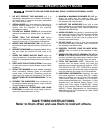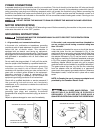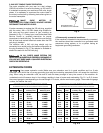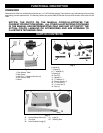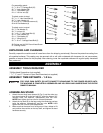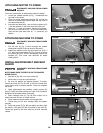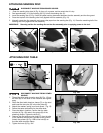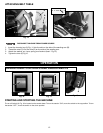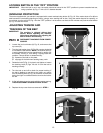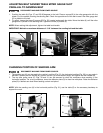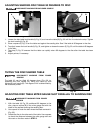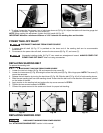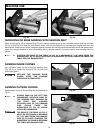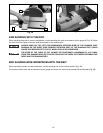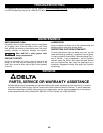
13
ADJUSTING TENSION AND
TRACKING OF THE BELT
The machine is shipped without belt
tension. Before operating the machine,
follow these instructions for adjusting the
belt for tension and tracking.
1. Loosen the two lock knobs (A) Fig. 19, and remove the
top cover (B).
2. Turn the belt tension lever (C) Fig. 20 counter-clockwise
to increase the belt tension. NOTE: The tension lever (C)
is spring-loaded and can be repositioned by pulling out
the handle, moving it, and letting it spring back into
position. Correct tension is determined by:
(A) flatness of the belt on the plate.
(B slippage of the belt when sanding heavy work.
3. Rotate the belt (D) Fig. 21 by hand, and tighten or loosen
the tracking knob (E) Figs. 20 and 21 until the belt is
tracking correctly.
4. Turn the tool on and off to check for proper tracking. If
the belt is leading to one side or the other, very gently
turn the tracking knob (E) Fig. 20 clockwise to move the
belt to the right or counterclockwise to move the belt to
the left.
5. A final adjustment can be made with the motor running.
THIS ADJUSTMENT SHOULD BE VERY SLIGHT.
6. Replace the top cover that was removed in STEP 1.
Fig. 20
Fig. 21
IMPORTANT:
DISCONNECT MACHINE FROM POWER
SOURCE.
OVERLOAD PROTECTION
The motor supplied with your sander is equipped with a reset overload relay button (A) Fig. 18. If the motor shuts off or fails to
start because of overloading (sanding too heavy, using a worn sanding belt or disc, using the sander beyond its capacity), or
low voltage, turn the switch (A) Fig. 16 to the “OFF” position. Let the motor cool three to five minutes and push the reset button
(A) Fig. 18. Start the motor.
Fig. 19
LOCKING SWITCH IN THE “OFF” POSITION
When the tool is not in use, the switch should be locked in the “OFF” position to prevent unauthorized use,
using a padlock (A) Fig. 17 with a 3/16" diameter shackle.
IMPORTANT:
A
B
C
E
D
E



